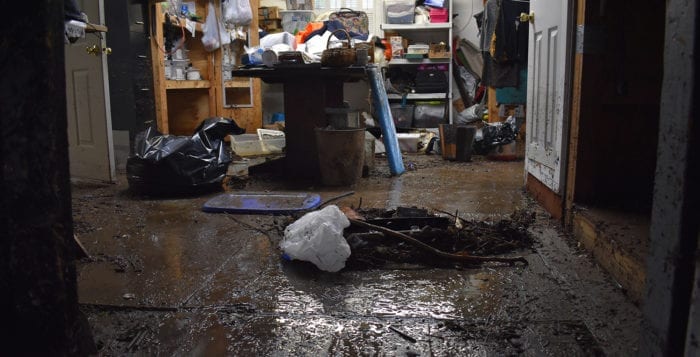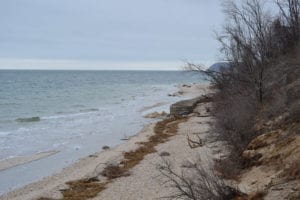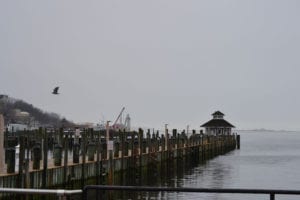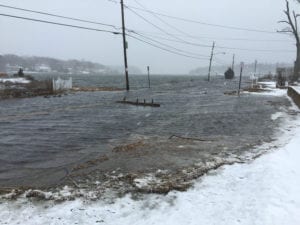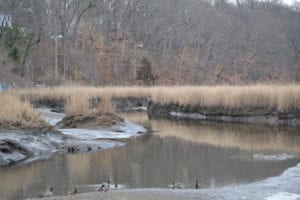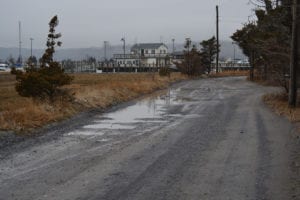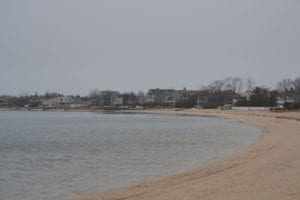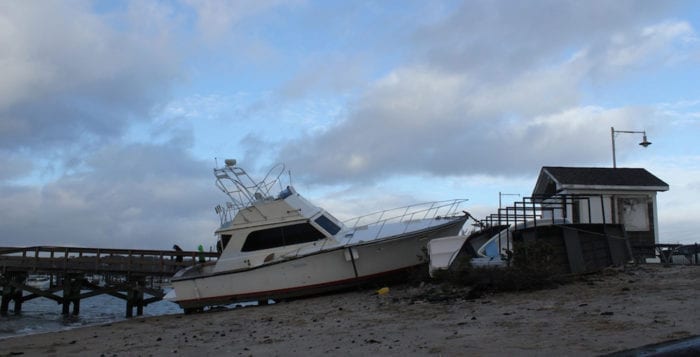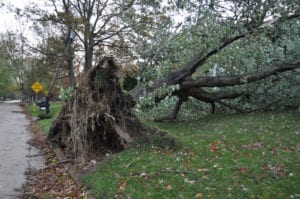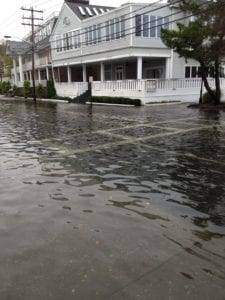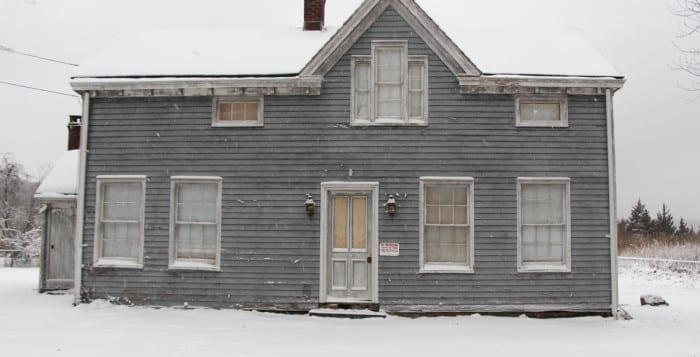Though the floodwaters have receded a week later, cleanup and questions still remain.
Port Jefferson Village was hit with more than four inches of rain in about an hour during the evening Sept. 25, and while village trustee Bruce D’Abramo joked Port Jeff might have been prepared to handle a 100-year storm, it wasn’t ready for the “200-year storm” it sustained. The extreme rate of rainfall resulted in flash flooding that inundated Main Street, trapped motorists in cars, washed out those dining out in restaurants and soaked auditioning actors at Theatre Three. The theater and other businesses like Ruvo East on Wynn Lane and Old Fields of Port Jefferson a block over experienced high water marks of about four feet. Old Fields was closed for a few days after the storm while Ruvo remained closed for renovations due to the flooding as of Oct. 2. Port Jefferson School District’s two instructional buildings also were affected by the flooding, according to its website, and officials are in the process of determining what aspects of the damage are covered by insurance.
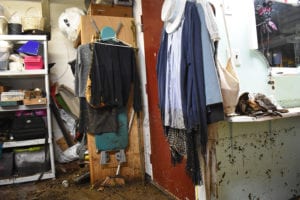
A furious volunteer effort ensued to get Theatre Three up and running in time for its Sept. 28 productions.
“We managed to get everything ready for Friday night and ran the entire weekend,” said Jeffrey Sanzel the theater’s executive artistic director.
Bradlee Bing, who serves on Theatre Three’s board of directors and was one of its founding directors in 1973, said cleanup efforts were undertaken by dozens of volunteers and staff in the 72 hours between the storm and Friday night’s productions. Work was done around the clock, spearheaded in large part by Brian Hoerger, the theater’s facilities manager, who Bing called the “champion” of the cleanup effort for his organizational and leadership role.
“As dark a day as it was, the sunshine and light of the volunteers really rejuvenated our energies and enthusiasm for what we’ve [been] doing these past 50 years,” Bing said. “The number of people that came down, multiple dozens of people that committed their time to putting everything back in order. The support of the town and community was overwhelming.”
He said restaurants donated food to help keep volunteers going, and The Home Depot and Lowe’s donated supplies to help remove the tons of mud and other remnants of the flood. He said much of the theater’s electrical wiring was destroyed. Sanzel said some other important items sustained major damage, including an HVAC unit, the boiler, costumes, a large chunk of props used in annual productions of “A Christmas Carol,” all of the props from the touring show “From the Fires: Voices of the Holocaust,” along with “many, many other things.”
“We’ve experienced in the past certain types of flooding in Port Jefferson,” Bing said. “This last one was the worst flooding event we’ve ever experienced. Wednesday morning was a mud disaster in the theater.”
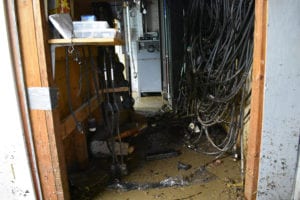
New York State Assemblyman Steve Englebright (D-Setauket) indicated he’s seen severe flooding in Port Jeff in the past during nonhurricane weather events, but this particular storm raised his eyebrows for a number of reasons. The storm occurred during low tide and flooding was not due to tidal waters, meaning had it occurred during high tide it’s possible tidal floodwaters would have combined with the flash flooding to cause water levels to reach in the ballpark of 10 feet instead of the four to five feet that actually occurred, Englebright said.
“When you put a layer of sand on top of a living marsh and then build housing and buildings on it, and rename it from Drowned Meadow to Port Jefferson, and hope nobody would notice, nature will come back and bite you from time to time,” he said. As the chairman of the Assembly’s Committee on Environmental Conservation, Englebright indicated storms like this one could become more frequent. “That’s a kind of a preview of what’s going to happen if we don’t seriously address climate. The big flood is still in the future, but the signposts all point toward continuing sea level rise. So I’m concerned.”
Englebright suggested in the meantime serious consideration be given to raising future structures constructed in the village above ground level.

